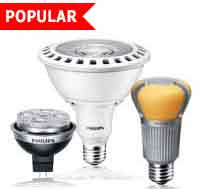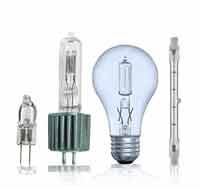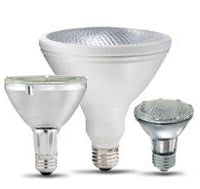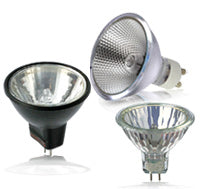The People vs. LEDs: A Technology on Trial
 On September 8, the New York Times ran an article on the Federal Trade Commission's (FTC) lawsuit against the California LED bulb manufacturer, Lights of America. The FTC filed suit against Lights of America over the manufacturer’s alleged overstatement of their LED products’ performance. This article signaled to me that it was time to write my own piece on LEDs and where I think they stand as of now. Consumers are probably used to hearing pretty mixed messages regarding LEDs: some people sing the praises of LED technology while others complain the market is being inundated by poor quality products that are not actually efficient and are sullying the LED’s good name. Before I attack this issue, however, I would like to briefly explain how an LED works and why it is supposed to be so efficient and such a good technology.
On September 8, the New York Times ran an article on the Federal Trade Commission's (FTC) lawsuit against the California LED bulb manufacturer, Lights of America. The FTC filed suit against Lights of America over the manufacturer’s alleged overstatement of their LED products’ performance. This article signaled to me that it was time to write my own piece on LEDs and where I think they stand as of now. Consumers are probably used to hearing pretty mixed messages regarding LEDs: some people sing the praises of LED technology while others complain the market is being inundated by poor quality products that are not actually efficient and are sullying the LED’s good name. Before I attack this issue, however, I would like to briefly explain how an LED works and why it is supposed to be so efficient and such a good technology.What makes LEDs so efficient and so novel is that they convert electrical current directly into light as the current passes through a semi-conducting material. For this reason there are no external materials like mercury or metals needed to produce light. Furthermore, most of the light created by LEDs lies along the visible spectrum unlike incandescent bulbs which create infrared light (heat) and fluorescent lights which create UV rays. LEDs are even more efficient if the bulb or fixtures have adequate heat sinks or ventilation and effectively dissipate the little heat generated. It is for this reason that LEDs are, and can be, so efficient. Among the major and most respected manufacturers in the lighting business, LEDs usually have a life hour rating of between 25,000hrs and 100,000hrs depending on their application and the type of LED. Obviously LED bulbs and fixtures with poor construction and poor quality will have shorter lives. CFL and incandescent life hour ratings usually fall somewhere in the 6,000hrs to 15,000hrs range and 1,000hrs to 2,000hrs range respectively. The luminous efficacy (lm/w) follows suit, LEDs have better luminous efficacy than CFLs and incandescent bulbs and produce more light per watt.
So what are these dissenters talking about? Well, they make an important point. No matter how promising LEDtechnology is, if the LED product is of poor quality, all of the benefits of the technology disappear. In the NY Times article referenced, the FTC found in an independent study of Lights of America’s LED products that their alleged 30,000hr recessed LED bulbs lost 80% of their output after only 1,000hrs—making them as efficient as a low-end incandescent bulb! People rightfully complain that top of the line LED bulbs are too expensive. Indeed, many LED bulbs from the major manufacturers are on the more expensive side and there may be cheaper ones out there from lesser known manufacturers which may not be terrible. But, the bottom line is this: if it seems to good to be true, it probably is. Consumers should be aware that top quality products often cost more than lower quality products and this even more exaggerated when we are speaking of newer technologies like LEDs.
At BulbAmerica we do our best to sell the highest quality LED bulbs and stage lighting products at the lowest prices possible. Check out our high quality LED bulbs and other products and start saving on energy today! If you have questions or comments on this article, leave them on our blog or our Facebook. Also, don’t forget to give us a call at 1-877-622-0897 for an answer on further questions you may have.













Comments